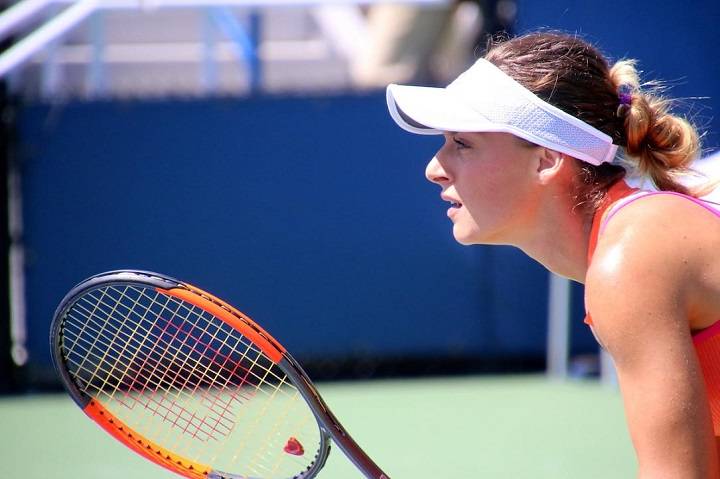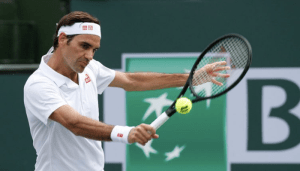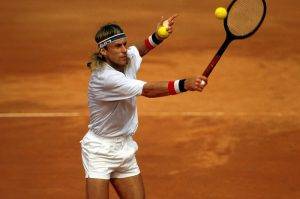In the illustrious realm of professional tennis, few tournaments carry the cultural and historical weight of the Italian Open. Nestled in the heart of Rome, this clay court extravaganza is a captivating blend of athletic prowess, strategic finesse, and the timeless allure of the Eternal City. In this comprehensive exploration, we delve into the nuances of the Italian Open, unraveling its rich history, dissecting the key elements that make it a tennis masterpiece, and celebrating the athletes who etch their names into the annals of this prestigious competition.
Embracing Tennis Tradition: The Historical Tapestry of the Italian Open
Inception and Evolution:
The Italian Open, officially known as the Internazionali BNL d’Italia, traces its origins back to 1930. Over the decades, it has evolved from a regional championship to a premier event on the ATP and WTA calendars, attracting the world’s finest tennis talents to the iconic Foro Italico.
Foro Italico: The Storied Venue:
The Foro Italico, with its picturesque setting along the Tiber River, serves as the hallowed grounds for the Italian Open. The red clay courts, set against the backdrop of historic statues and architectural splendor, create an atmosphere that is both grand and intimate—a perfect stage for tennis excellence.
Key Components: Unveiling the Essence of Italian Open Tennis
Clay Court Dynamics:
The Italian Open’s red clay courts introduce a unique dimension to the competition. Clay court tennis demands a combination of stamina, sliding prowess, and strategic shot-making. The slow, unpredictable bounce of the surface adds an intriguing layer to matches, testing the adaptability of players.
Singles and Doubles Showdowns:
The tournament features both singles and doubles competitions, providing a platform for singles specialists to showcase their individual brilliance and doubles teams to exhibit their synchronized skills. The doubles matches, often characterized by rapid exchanges at the net, bring a different rhythm to the Italian Open stage.
Men’s and Women’s Draws:
The Italian Open hosts parallel events for both men and women, with the draws featuring the top-ranked players from the ATP and WTA tours. The fierce competition unfolds across multiple rounds, culminating in thrilling finals that crown the champions of the clay court spectacle.
Legends in the Clay: Notable Champions and Iconic Matches
Bjorn Borg’s Dominance:
In the late 1970s, Swedish tennis legend Bjorn Borg asserted his dominance on the clay courts of the Italian Open. His unparalleled success during this period included multiple titles, solidifying his status as one of the greatest clay court players in the history of the sport.
Chris Evert’s Reign:
On the women’s side, Chris Evert left an indelible mark on the Italian Open, claiming numerous titles during her illustrious career. Her mastery of clay court tennis and strategic brilliance made her a perennial force on the red dirt of Rome.
Nadal’s Clay Court Dynasty:
In the modern era, the Italian Open has been a pivotal battleground for Rafael Nadal. The Spanish maestro, often referred to as the “King of Clay,” has added multiple Italian Open titles to his extensive clay court resume, showcasing his unparalleled prowess on the surface.
Epic Encounters:
The Italian Open has been the stage for epic encounters that have etched lasting memories in the minds of tennis enthusiasts. From closely contested finals to marathon matches that push players to their limits, the tournament’s history is punctuated by moments of sheer brilliance and tenacity.
Clay Court Maestros: Strategies and Skills on Display
Baseline Brilliance:
Clay court tennis often favors players with strong baseline games. The ability to construct points patiently, execute precise groundstrokes, and slide effortlessly across the court are crucial components of success on the slow, forgiving surface.
Serve-and-Volley vs. Baseline Battles:
While baseline play dominates, there is room for varied playing styles. Some players choose to employ the serve-and-volley tactic, bringing a mix of power and finesse to their game. The contrast between baseline battles and serve-and-volley duels adds an element of tactical diversity to the Italian Open.
Strategic Adaptations:
The ever-changing conditions of clay courts, influenced by factors such as weather and court maintenance, require players to make strategic adaptations. Adeptness in adjusting playing styles based on court conditions is a hallmark of successful performers at the Italian Open.
Road to Roland Garros: Italian Open as a French Open Prelude
Clay Court Swing:
The Italian Open marks a crucial juncture in the clay court swing leading up to the French Open. Players use the tournament not only to capture a prestigious title but also to fine-tune their clay court game and gather momentum for the Grand Slam event at Roland Garros.
French Open Champions’ Path:
Several players who have triumphed at the Italian Open have gone on to conquer the French Open, showcasing the symbiotic relationship between success in Rome and success in Paris. The Italian Open serves as a litmus test for players eyeing glory at Roland Garros.
Crowd Engagement: The Tifosi’s Passion for Tennis
Passionate Fanbase:
The Italian Open is renowned for its passionate and vocal fanbase, known as the “tifosi.” The enthusiastic support of the crowd creates a charged atmosphere, elevating the intensity of matches and providing players with an extra layer of motivation.
Iconic Moments with the Tifosi:
Memorable moments with the tifosi include players interacting with the crowd, celebrating victories, and embracing the unique energy that permeates the Foro Italico. The intimate connection between players and fans adds a distinctive charm to the Italian Open.
Majestic Moments: Architecture, Culture, and Tennis Fusion
Architectural Splendor:
Beyond the tennis courts, the Foro Italico’s architectural splendor contributes to the tournament’s allure. The statues, fountains, and grand structures provide a backdrop that seamlessly blends the rich history of Rome with the contemporary drama of tennis.
Cultural Extravaganza:
The Italian Open is not just a tennis tournament; it’s a cultural extravaganza. Rome’s cultural richness, artistic heritage, and culinary delights add an extra layer of enjoyment for players and fans alike, creating an immersive experience that extends beyond the confines of the tennis court.
Challenges and Adaptations: Clay Court Realities
Weather Variability:
The outdoor nature of the Italian Open exposes players to the variability of weather conditions. From scorching heat to intermittent rain, players must adapt to the changing climate, adding an element of unpredictability to the tournament.
Fitness and Endurance:
Clay court tennis places additional demands on players’ fitness and endurance. The longer rallies and sliding movements require a high level of physical conditioning, and players must navigate the physical toll of multiple matches in the quest for the title.
Transition from Hard Courts:
For players transitioning from the faster surfaces of hard courts to the more deliberate pace of clay, adjusting playing styles and footwork becomes imperative. The Italian Open serves as a pivotal test for players acclimating to the unique challenges posed by clay court tennis.
The Business of Tennis: Sponsorships, Prizes, and Financial Dynamics
Sponsorship Impact:
Sponsorship deals play a significant role in the financial dynamics of the Italian Open. The visibility and prestige associated with the tournament attract corporate sponsorships, contributing to the overall financial success and prize money offered.
Prize Money Evolution:
Over the years, the prize money for the Italian Open has witnessed significant growth, reflecting the tournament’s elevated status in the tennis world. The pursuit of lucrative prizes serves as an additional incentive for players aiming to make their mark on the clay courts of Rome.
Economic Impact on Rome:
The Italian Open not only impacts the global tennis landscape but also contributes to the local economy in Rome. The influx of visitors, media coverage, and tourism associated with the tournament enhance the city’s economic vibrancy during the event.
Legacy and Future: Sustaining the Grandeur of the Italian Open
Enduring Legacy:
The Italian Open’s enduring legacy is built on a foundation of tennis excellence, cultural integration, and passionate fan engagement. The tournament’s storied history and iconic moments contribute to its timeless appeal, ensuring its place among the most prestigious events on the tennis calendar.
Innovations and Evolutions:
In an ever-evolving sports landscape, the Italian Open continues to innovate and adapt. From technological advancements in court maintenance to fan engagement initiatives, the tournament embraces changes that enhance the overall experience for players and spectators.
Global Impact:
As the Italian Open continues to captivate audiences worldwide, its global impact extends beyond the Foro Italico. The tournament’s influence on the clay court season, its role in players’ preparations for Grand Slam events, and its contribution to the global tennis narrative solidify its significance in the broader tennis landscape.
Related Post:
Mastering Skills of Cricket: A Comprehensive Guide to On-field Excellence
Mastering All Volleyball Positions: A Comprehensive Guide to Court Excellence
Decoding Soccer Scoring: Unveiling the Artistry of Finding the Net
In the heart of Rome, where echoes of ancient history blend with the contemporary rhythm of tennis, the Italian Open unfolds as a symphony of athletic prowess and cultural richness. From the red clay courts that witness epic battles to the statuesque grandeur of the Foro Italico, the tournament weaves a narrative that transcends sports—a narrative that celebrates the spirit of competition, the elegance of tennis, and the timeless allure of one of the world’s most captivating cities.
As players vie for supremacy and fans cheer from the stands, the Italian Open stands as a testament to the enduring magic of tennis. It is not just a tournament; it is a celebration—a celebration of skill, passion, and the harmonious blend of sport and culture. So, as the next chapter of the Italian Open saga unfolds, the world awaits another verse in this captivating tennis symphony, where athletes carve their names into the clay, and the Eternal City bears witness to yet another glorious act in the grand theater of tennis.



